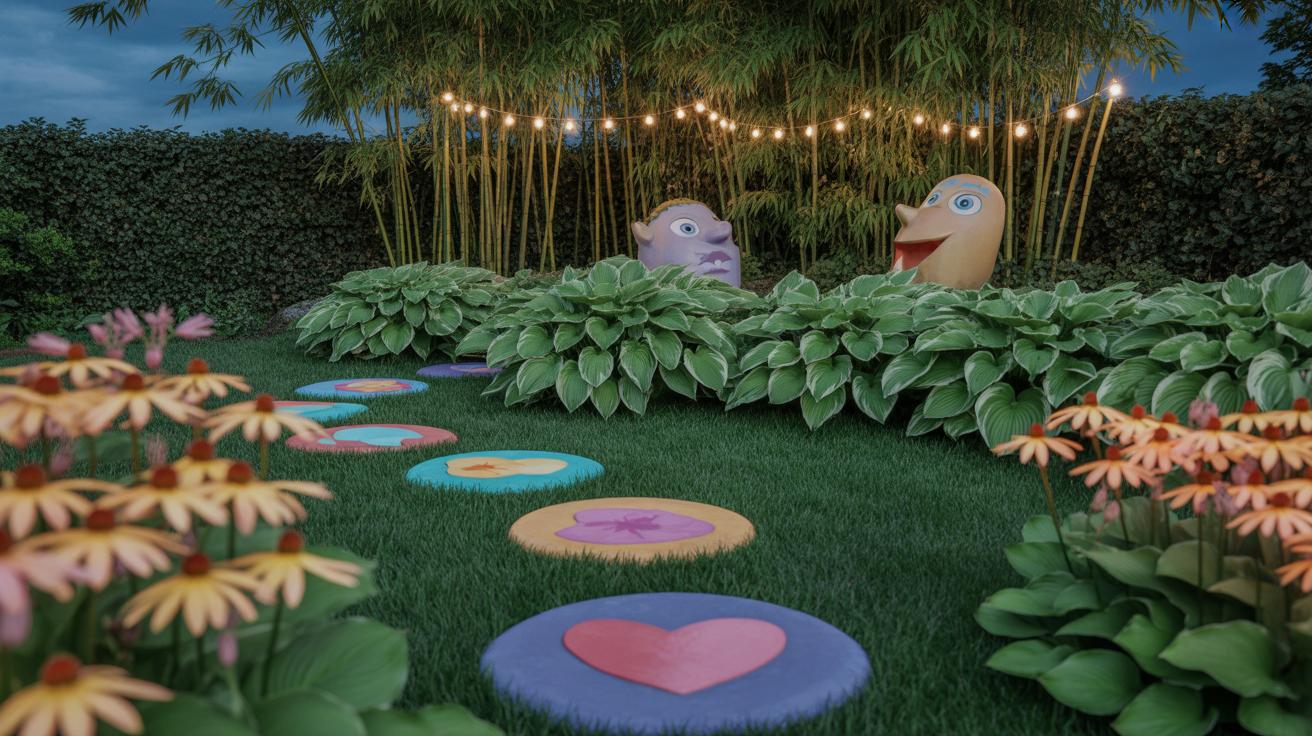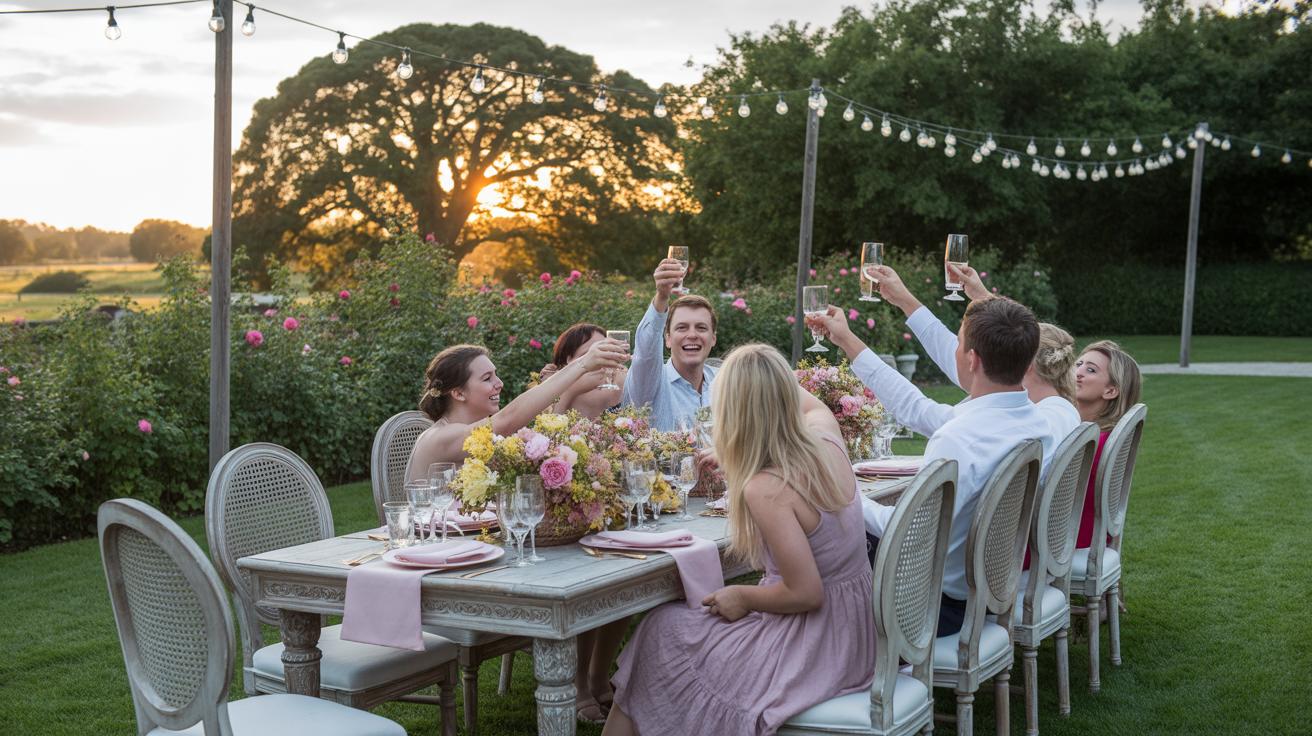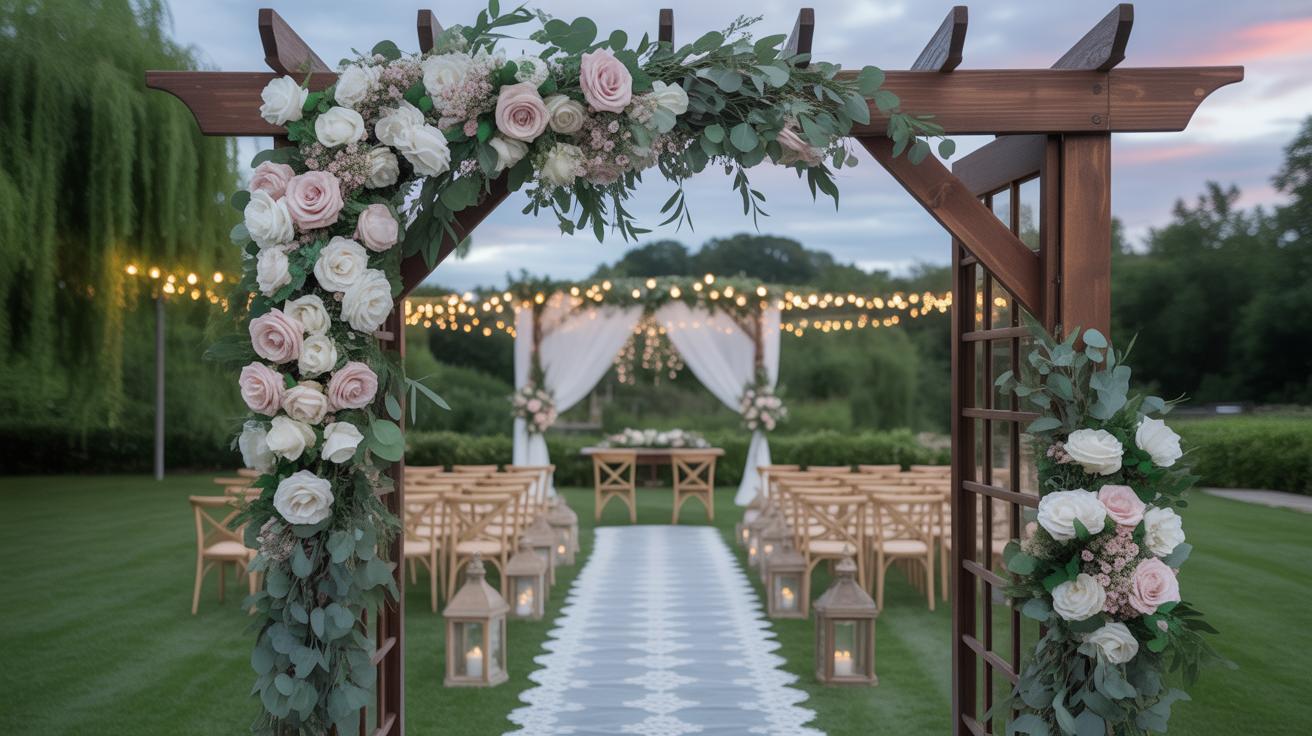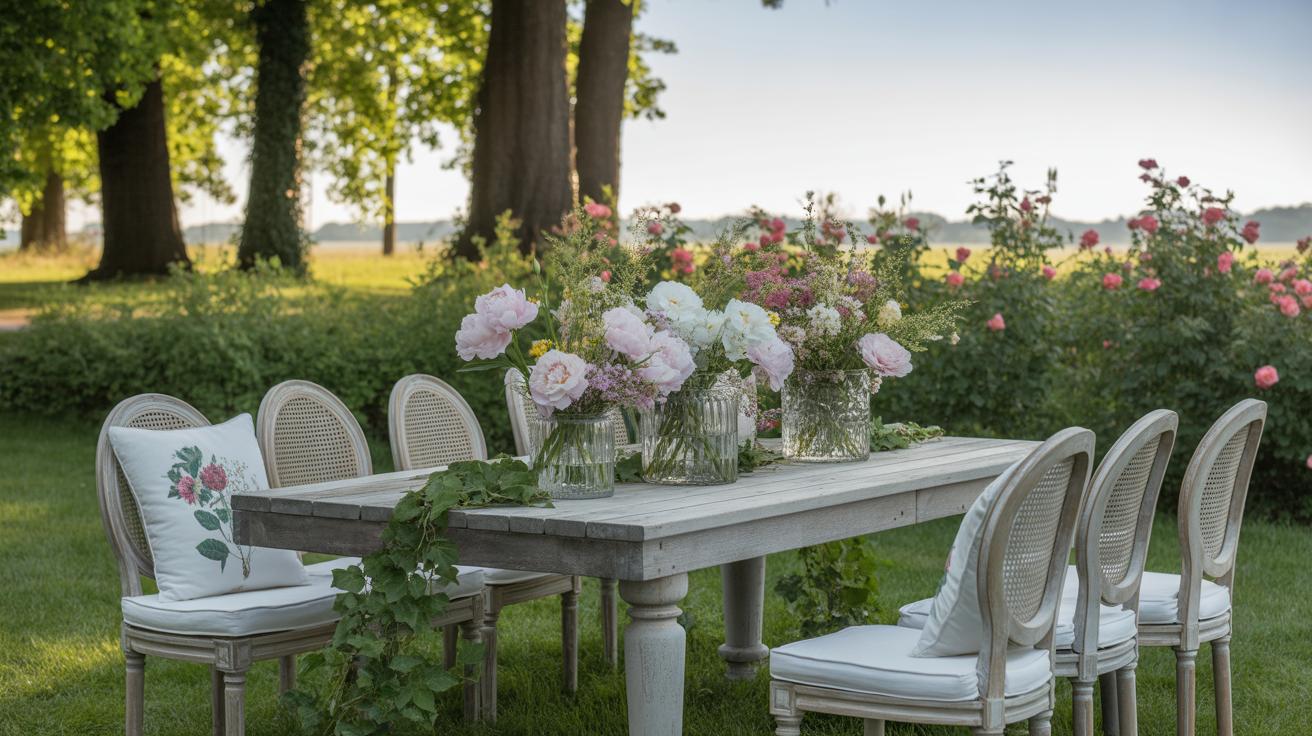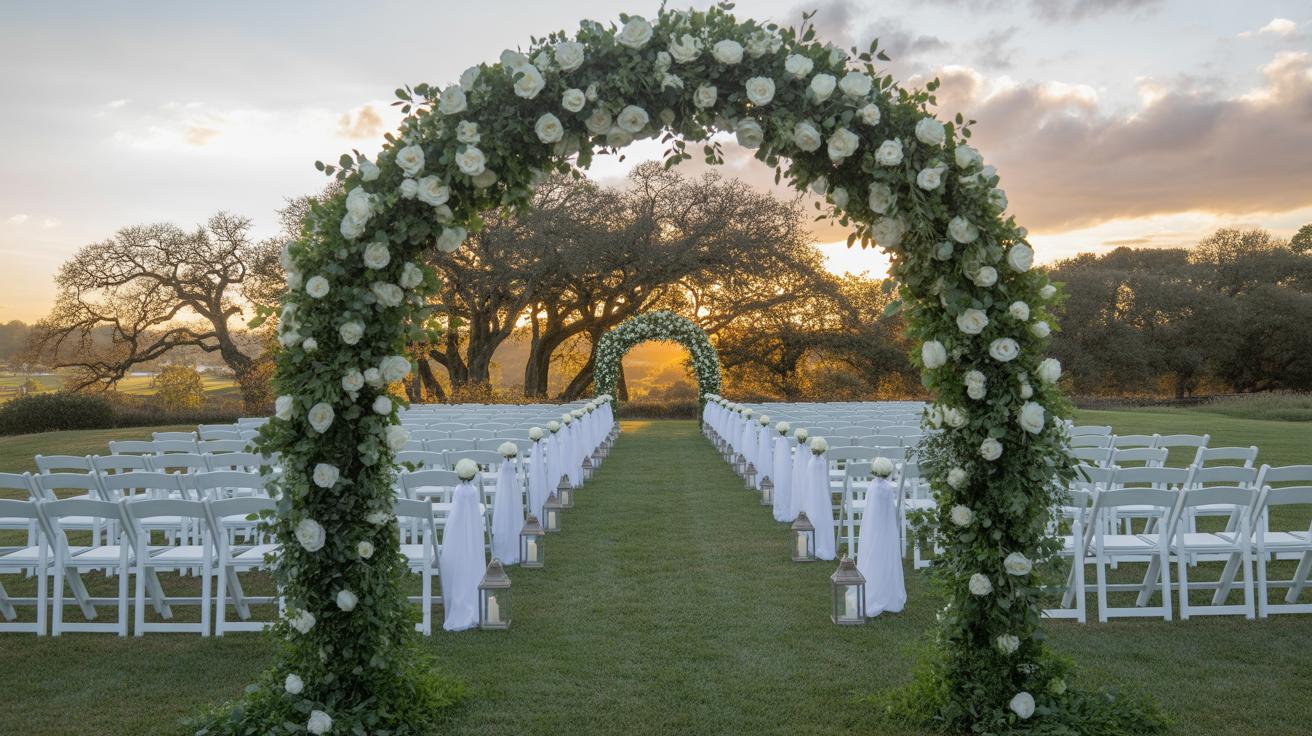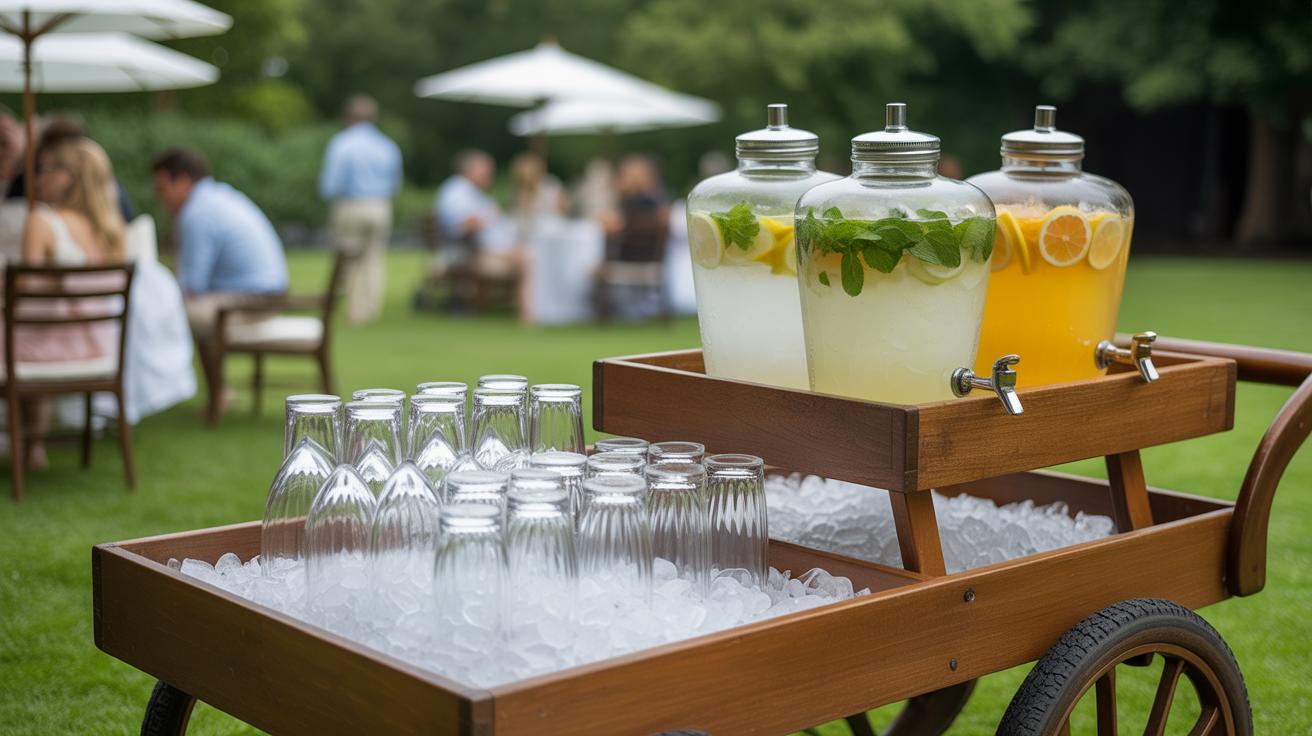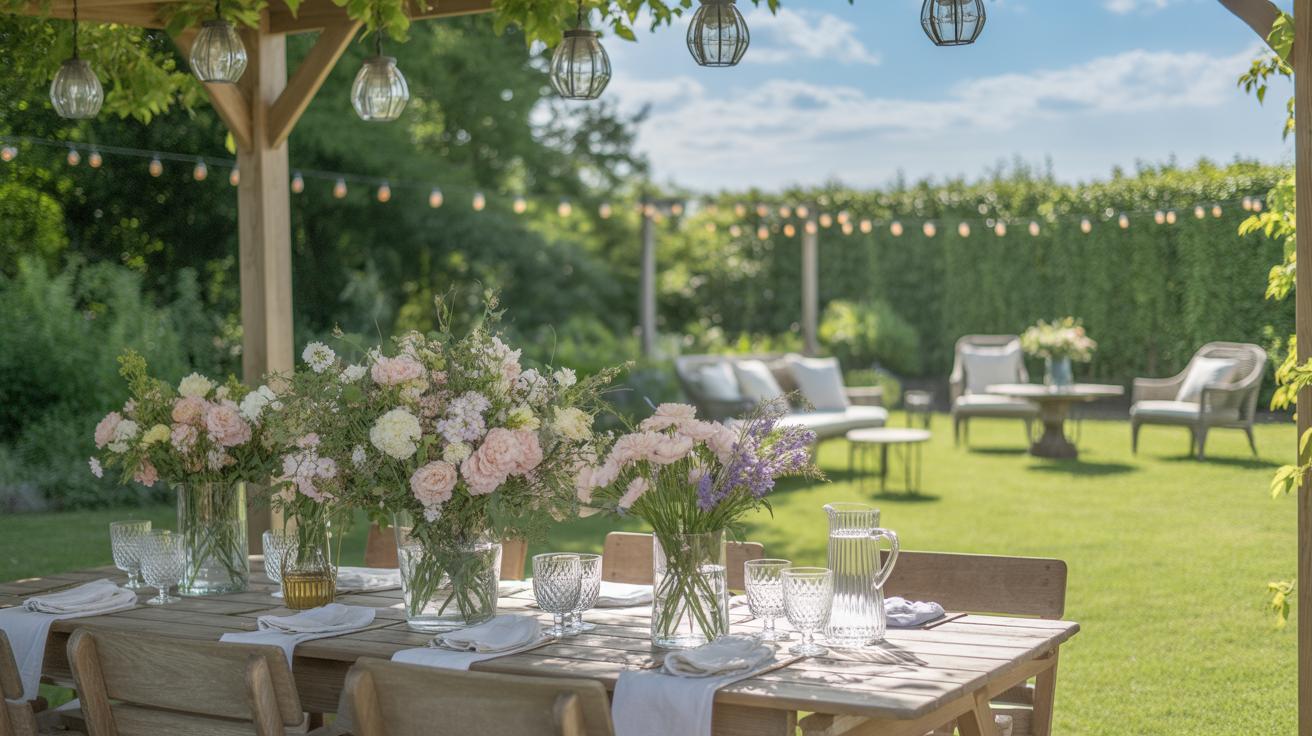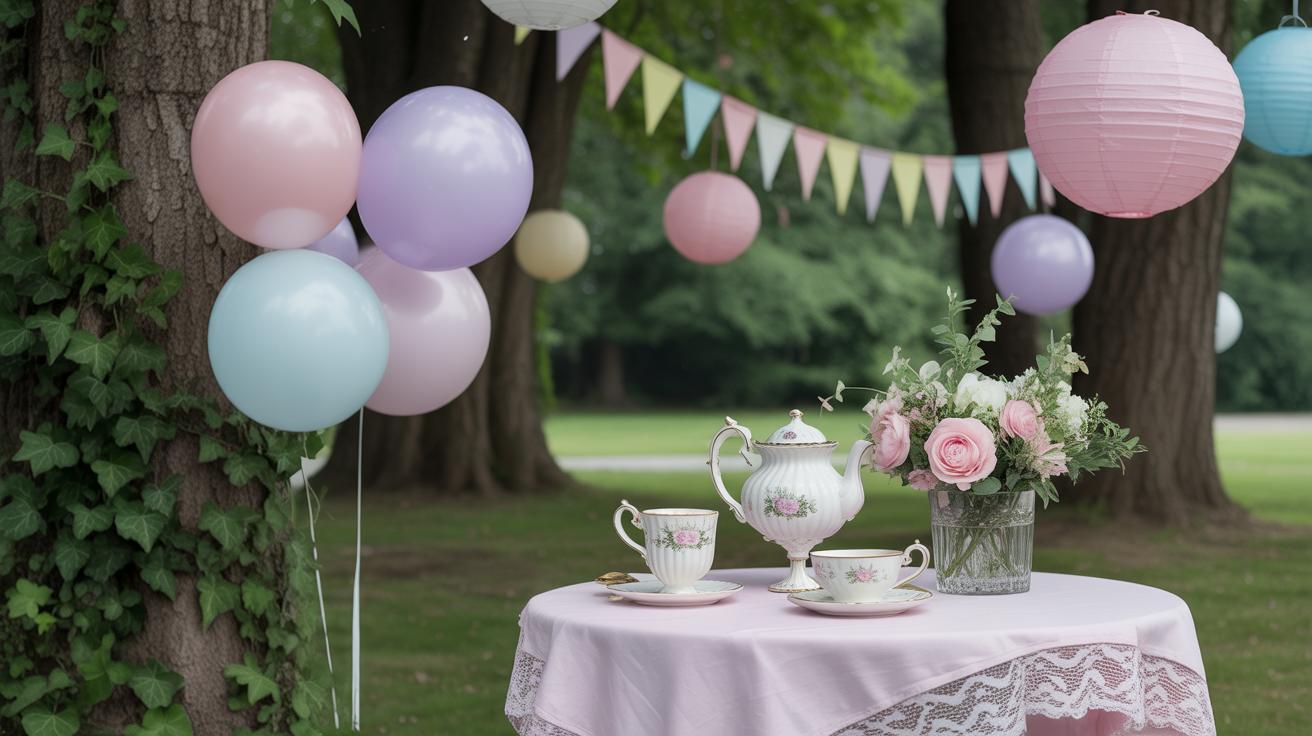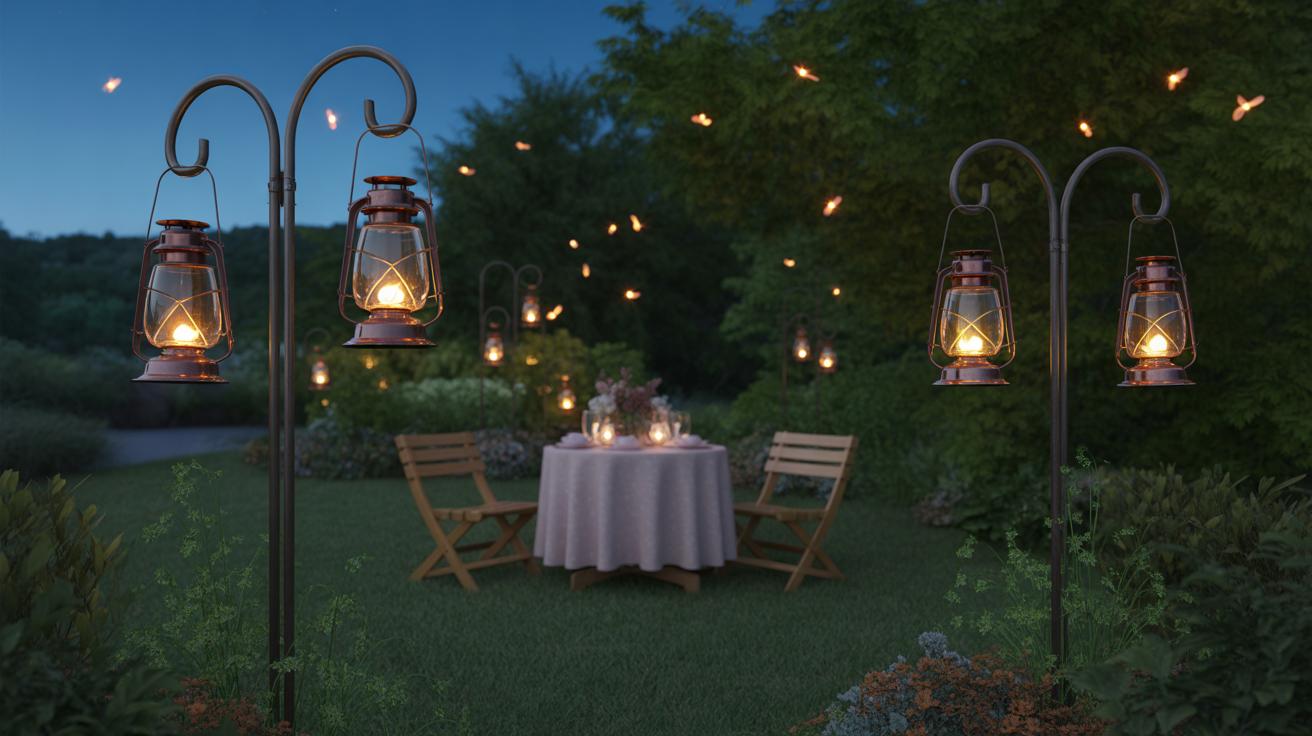Introduction
Transforming your backyard into a magical garden with whimsical decor is a rewarding way to add charm and joy to your outdoor space. This kind of garden sparks delight and invites creativity, making your yard a fun and relaxing place to spend time. In this article, you’ll discover practical ways to bring magical elements and playful touches into your garden.
We will explore topics such as picking the right plants and decor, designing garden sections, and simple projects to personalize your garden. You can make your garden a special place that you and your family will love, with decorations and layouts that fit your style and needs.
Planning Your Magical Garden
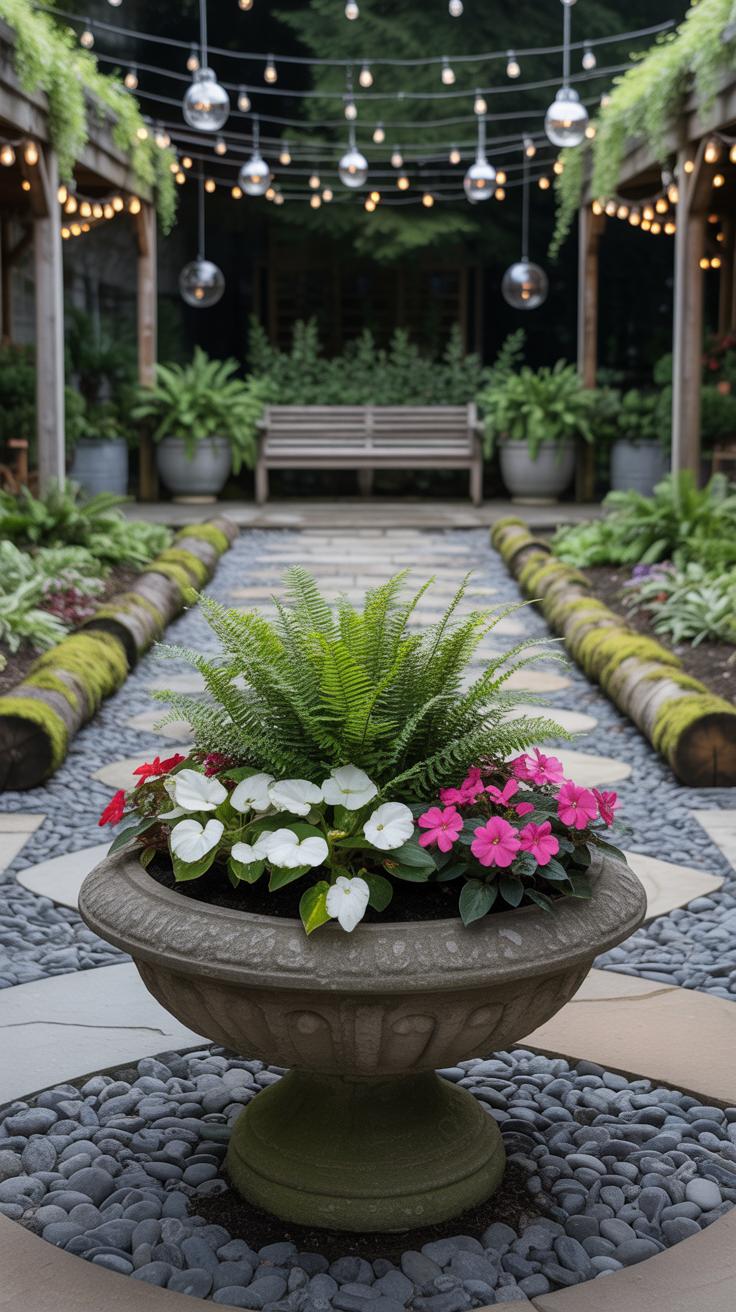
Understanding Your Garden Space
Before anything else, take a good look at your backyard. Measure the length and width to get a clear idea of the actual space you have—it’s surprising how often people underestimate or overestimate this. Spend a few days watching how sunlight moves across your garden. Which spots are bright all day? Which are shaded? This matters because some magical features—like glowing plants or delicate blooms—need sun, while others thrive in shade.
Don’t forget the soil. Dig a little and feel it. Is it sandy, heavy clay, or somewhere in between? Does water drain easily or linger? These simple observations can steer your plant choices and décor placement. I once planted whimsical mushrooms in clay soil, only to find they struggled; a quick soil mix adjustment made all the difference.
Setting Your Garden’s Theme and Style
Next, imagine the mood you want. What kind of magic feels right? Are you drawn to fairy tales, with tiny doors and little lanterns? Maybe a fantasy vibe, with otherworldly colors and shapes? Or perhaps a more natural whimsy, like wildflowers and twisted branches?
Sometimes, a theme comes naturally. Other times, you might find it shifts as you dig in. That’s okay. You can start by jotting down a few words or ideas that excite you: mystery, playfulness, peace, surprise. These can guide your choices, giving the garden a unique character that’s yours alone. Just be open to changing your mind once plants and features start filling the space.
Choosing Plants for a Magical Look
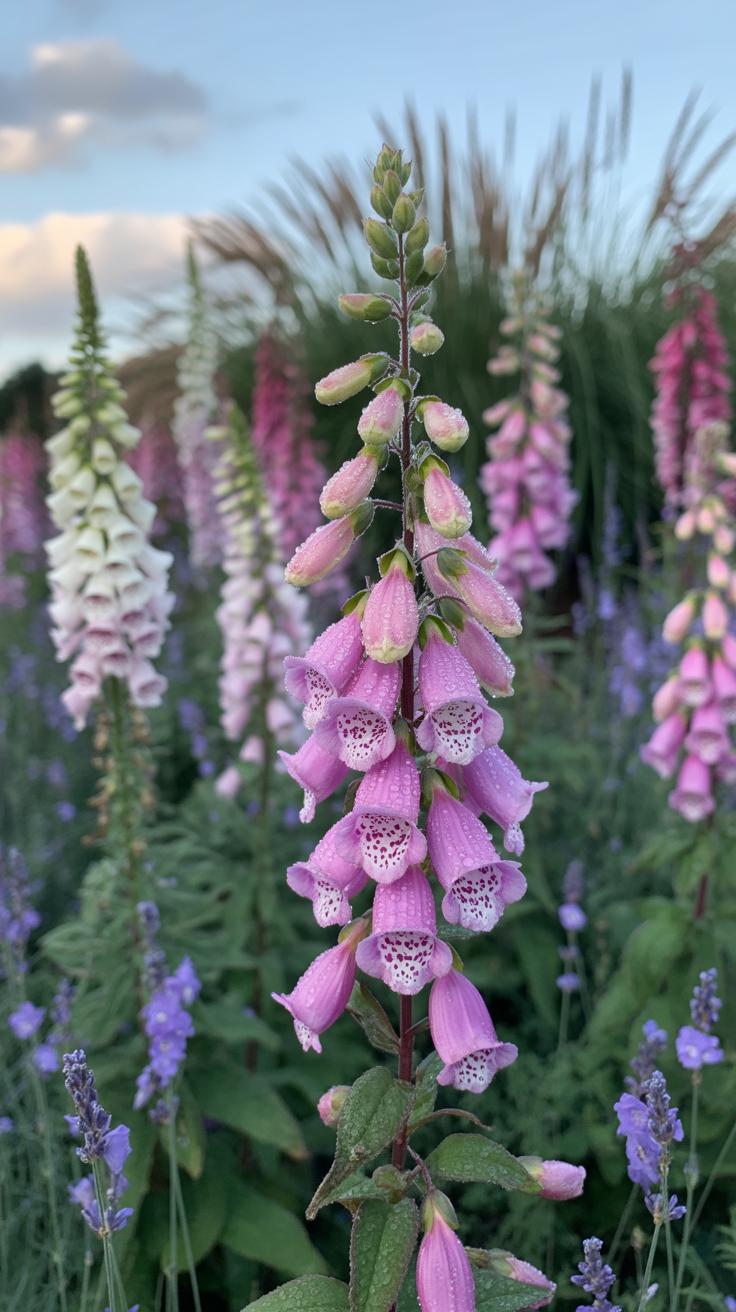
Picking plants with unusual shapes or soft, sweet scents can change your backyard from ordinary to something a bit more curious. Think about plants like lavender—it’s easy to grow, smells nice, and has that slightly fuzzy look that feels almost otherworldly. Or maybe star jasmine, which climbs gently with tiny white flowers that seem almost delicate enough to fade away at any moment. These are the kinds of plants that slowly sneak into your mind as you wander through the garden.
Mixing leaf shapes is another way to catch the eye. Rounded leaves next to spiky ones, or feathery soft foliage alongside bold, broad leaves create little moments of surprise. You don’t have to go overboard either—a few unusual plants scattered around make the space feel more alive.
If you want your garden to feel alive beyond just plants, adding flowers like butterfly bush or bee balm can invite birds, butterflies, and bees almost on their own. Watching them flit about adds motion and energy. It’s a bit like your magical garden has a heartbeat—or at least, that’s how I sometimes see it when the afternoon sun hits just right.
Adding Whimsical Garden Decor
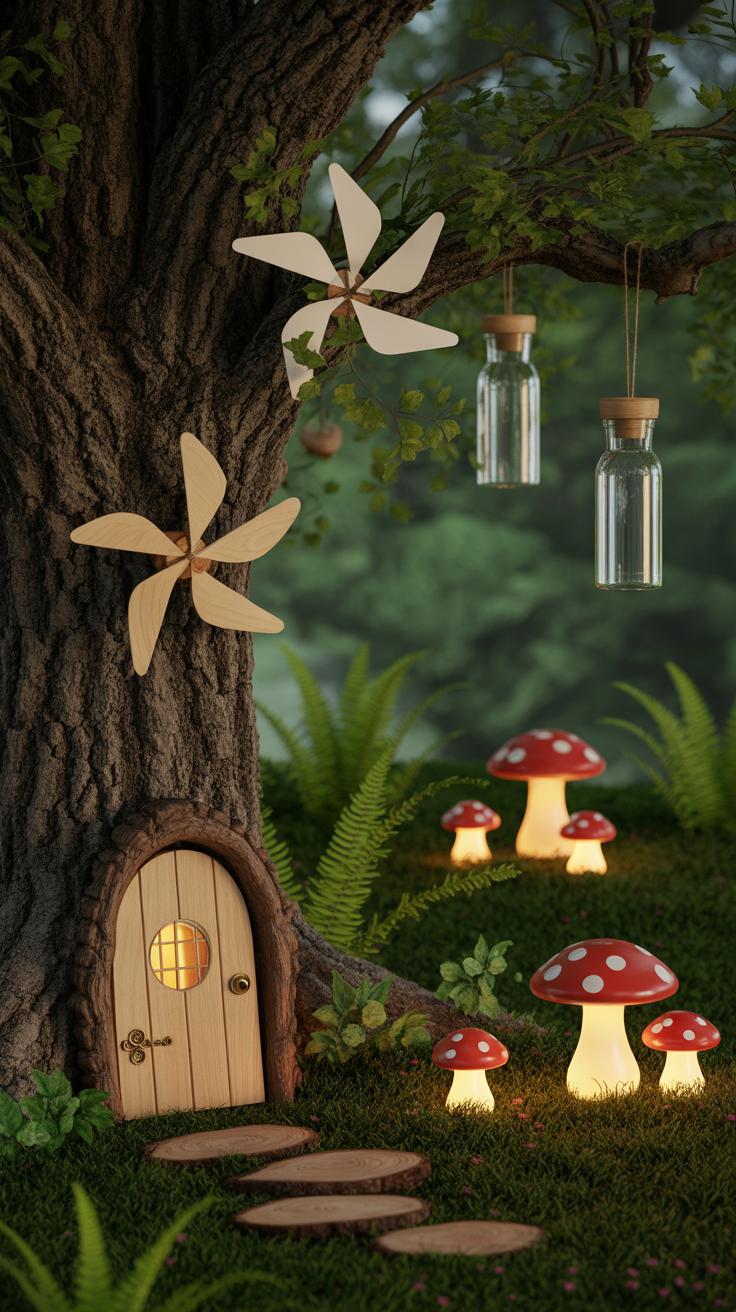
Fairy lights twisted around tree branches or woven through shrubs can instantly change your garden’s feel after dusk. The soft, uneven glow they cast makes the space seem more alive, like something’s quietly lurking just beyond sight. I think stringing them along a fence or draping them over a pergola adds that subtle magic you might not expect but often appreciate.
Colorful wind chimes bring movement and sound—a gentle music that can feel either calming or playful depending on the breeze. Choosing chimes with bright colors or unusual shapes gives the air an extra layer of charm. I’ve noticed that the way they tinkle wakes up the space, making it feel less static.
Garden statues, especially ones with quirky or fairy-tale characters, become focal points hiding in plain sight. They invite curiosity and sometimes a double take. They don’t have to be grand; even small, slightly weathered pieces give a story-like touch. You might find they inspire moments of wonder when you least expect them.
Lastly, DIY art pieces make the garden truly yours. Painted stones, handmade hanging mobiles, or simple wind spinners crafted from recycled materials offer a personal flair. Using everyday items lets you experiment freely—and it’s oddly satisfying watching your creations settle into the space.
Simple Decor Pieces That Make a Big Impact
Try adding just a few of these easy pieces:
- Burnt-out lanterns repurposed as plant holders: They add a vintage vibe without needing much effort.
- Mason jars filled with pebbles and candles: Place them on tables or hang them from branches for cozy glints.
- Brightly colored garden stakes or markers: They bring quirky pops of color and guide visitors gently.
- Mirrors tucked among flowers: Reflect light and expand the sense of space, though placement feels a bit tricky to get just right.
Each of these pieces nudges the garden’s mood toward enchantment without overwhelming the natural beauty you’ve chosen. It’s worth trying one or two and seeing how it reshapes your space over the weeks.
DIY Projects to Personalize Your Garden
There’s always something about crafting your own decor. It’s imperfect. It’s real. And it grows the connection you have with this outdoor space.
Using simple materials found around the house, you can:
- Paint small rocks with mystical symbols or vibrant patterns, then scatter them along paths or plant pots.
- Make wind chimes from driftwood, old keys, and shells—materials that might already have stories to tell.
- Create hanging planters from repurposed containers like tired teacups or tin cans, adding a splash of unexpected charm.
These projects don’t need to be perfect or elaborate. Sometimes a bit of roughness adds personality. If you’re unsure where to start, pick one idea and see how it evolves. You might surprise yourself by what feels right in your garden’s magical story.
Creating Paths and Hidden Corners
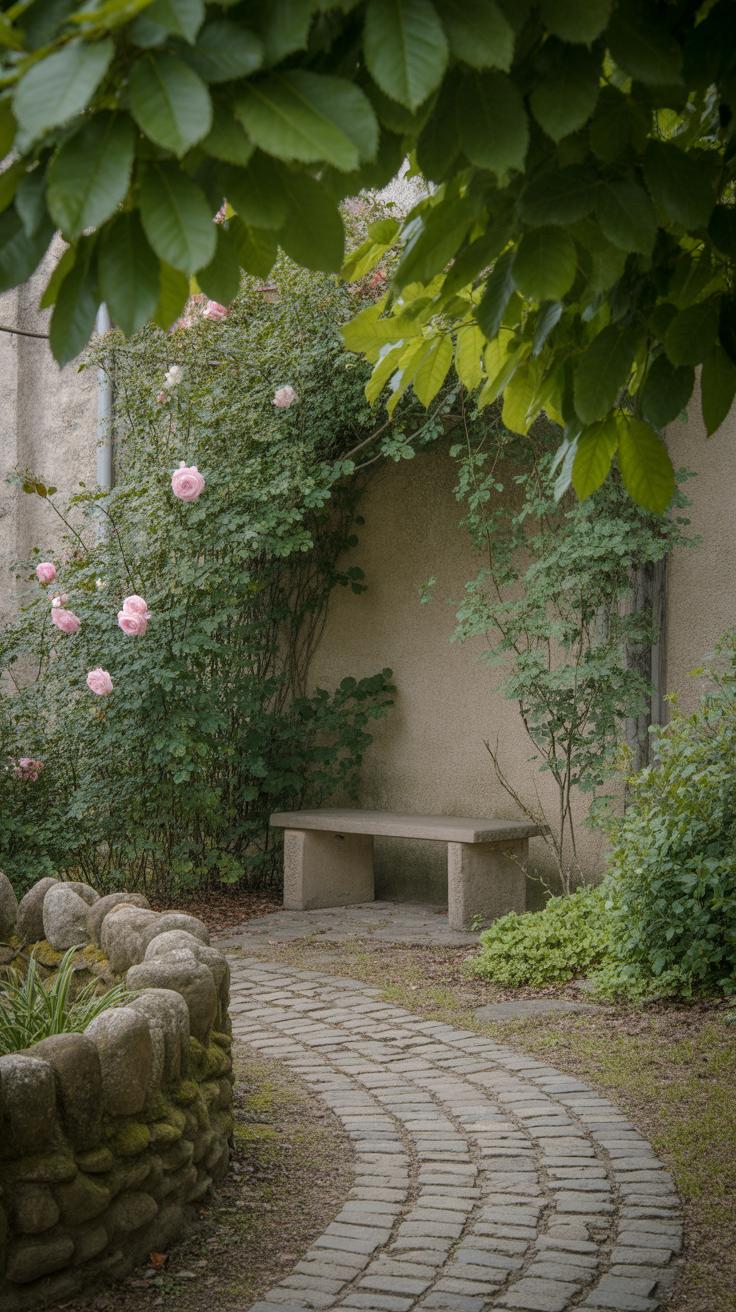
Materials and Layouts for Whimsical Paths
Choosing the right materials for your garden paths can really change the mood. Stepping stones, for example, offer a playful, almost storybook feel. You might arrange them in uneven patterns to encourage a sense of wandering—and maybe even a little surprise each step. Gravel paths work well if you want soft sounds underfoot and an easy way to shift the path’s shape over time. Wood chips bring warmth and a natural texture, but they need refreshing more often than stones or gravel. I’ve found that mixing materials—like pairing a gravel loop with stepping stone accents—can break up monotony, though it’s not always easy to get the balance right.
When laying out your paths, think beyond straight lines. Curves invite exploration and can make small spaces feel bigger. Shortcuts tucked behind shrubbery or unexpected bends near flower beds might prompt you—or your guests—to slow down and look closer. Is there a spot you want to reveal gradually? The path can do that, too.
Designing Cozy Nooks and Hideaways
Hidden corners provide breathers from the rest of the garden’s hustle—or at least what you imagine as hustle in the backyard. A small bench under a flowering arch can feel private without really being so. You could create one by training climbing plants over a simple frame, making a sort of natural doorway. Or maybe a tiny gazebo or lattice structure tucked in a shaded patch—quiet, but still part of the surroundings.
Don’t underestimate the power of scale here. Even a single garden chair nestled between tall ferns can become your personal refuge. Sometimes, just clearing out an irregular space and adding a soft cushion is enough to make a small nook that invites lingering. I think those “hidden” spots work best when they’re not entirely out of view—just enough to feel special but not isolated.
Lighting to Enhance the Magical Ambience
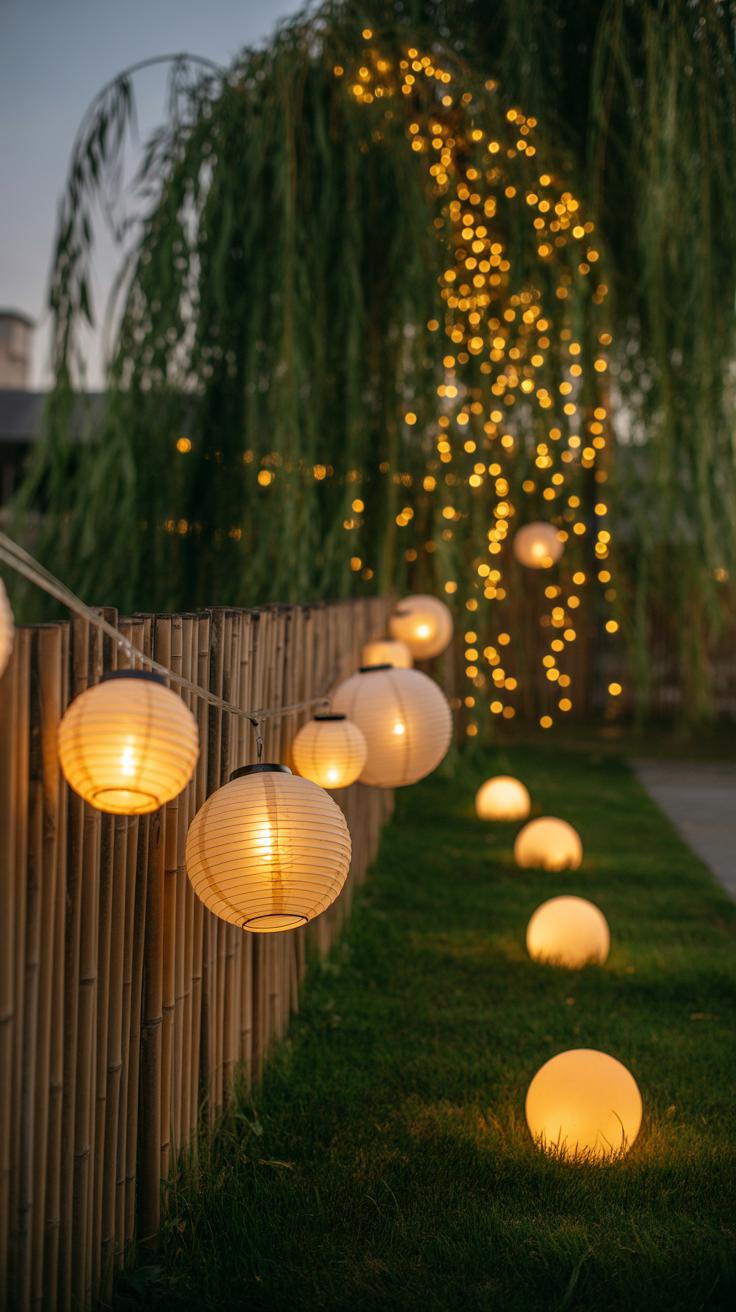
Choosing the right lights can change everything once the sun goes down. Solar lanterns are a popular pick, especially because they don’t need wiring and charge during the day. They add a soft glow that feels natural, perfect if you want subtle sparkle without fuss. String lights, on the other hand, offer more flexibility. You can drape them over branches, wrap around pergolas, or hang along fences. They bring a sense of whimsy and can turn even a simple corner into something inviting.
There are plenty of lighting options beyond these. Spotlights can highlight specific plants or garden statues, while stake lights guide your steps along a path. Fairy lights mimic a firefly effect, and LED candles placed in jars create warm pools of light. Each type has its place, but it really depends on the feel you want and how much effort you want to put into maintenance.
When planning your lighting layout, think about safety first. Avoid running wires across walkways where feet trip easily—solar options reduce this risk, but if you use plugged lights, secure cables well. Clusters of lights work better than a single bright bulb; they create layers and avoid glare. Also, don’t forget to test your setup at night before finalizing. Sometimes, what looks perfect in daylight might feel overwhelming or underwhelming after dark.
Incorporating Water Features
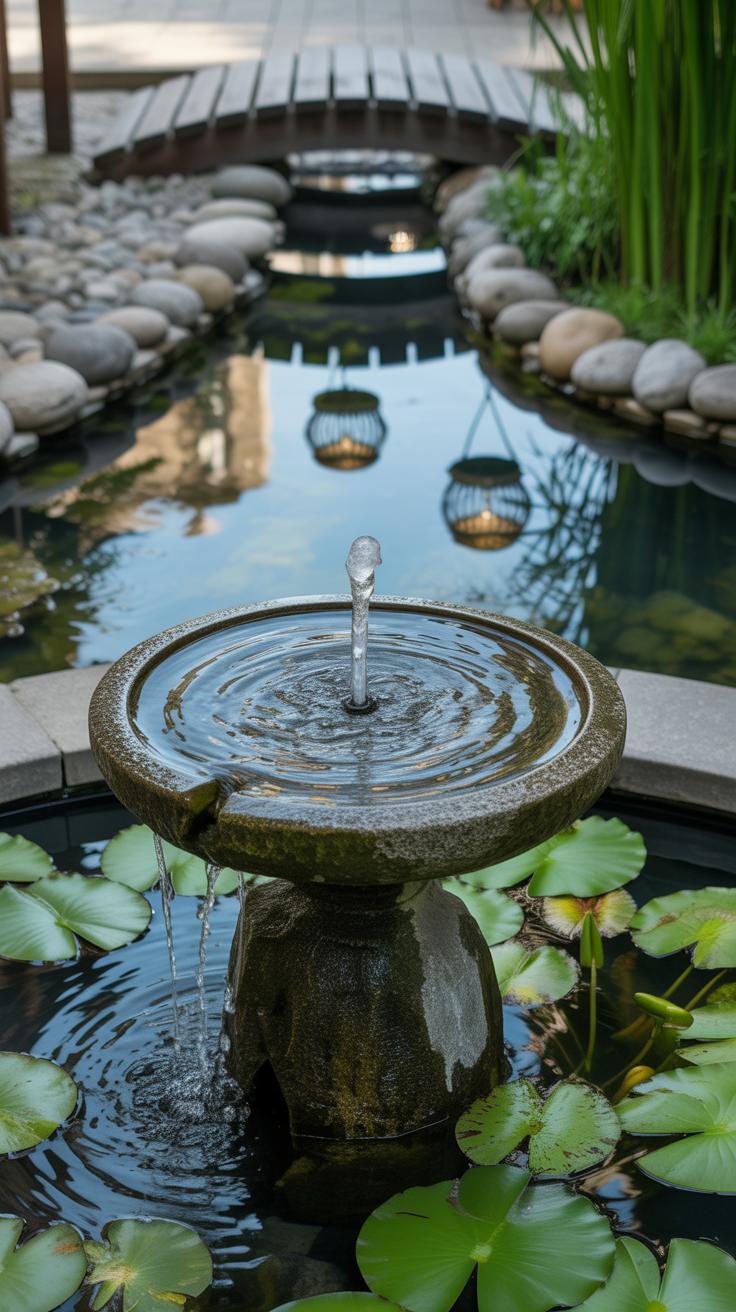
Small water elements can quietly change how your garden feels. Think of a simple birdbath or a gentle fountain. The soft sound of trickling water often draws you in unexpectedly—it’s calming, yes, but it adds a subtle layer of magic. Sometimes, when I’m outside, the gentle splash feels like the garden’s whisper, inviting you to pause, maybe look closer at a flower or watch a bird land nearby.
Beyond sound, water reflects light in ways that shift throughout the day, giving your garden another kind of movement. Even a modest feature can create interest without overwhelming the space or your budget. You might find that just having water nearby makes the garden feel more alive—strangely peaceful, even if everything else is buzzing with activity.
Choosing the Right Water Feature for Your Space
It can be tricky to pick the right water feature depending on your space. Here’s a quick guide that might help you decide:
- Birdbaths – Great for small patios or tight spots where you want to invite birds in. They don’t take much room but offer plenty of charm.
- Wall fountains – Perfect if you don’t have much floor space but have a blank wall. These fit well in courtyards or narrow garden paths.
- Tabletop fountains – These are portable and work well for decks or balconies if you don’t have a traditional garden.
- Small ponds – Better for larger gardens where there’s room to accommodate more wildlife. They can feel a bit more dramatic but need a dedicated spot.
Choosing depends on your space, but also on how much time you want to spend caring for it. Sometimes a small fountain surprises you with how much life it brings.
Maintaining Water Features Easily
Keeping these features clean isn’t too hard, though it does require some attention. Here are a few simple tips I’ve found helpful, especially when you don’t want the chore to take over:
- Change the water regularly to avoid stagnation and algae buildup.
- Use a gentle brush or cloth to wipe surfaces, preventing dirt or mineral stains.
- Keep an eye on pumps or filters; a quick rinse can keep them running smoothly.
- Consider adding small water plants—they can naturally reduce algae and add interest.
It’s easy to forget about maintenance until things look neglected, but a bit of routine can keep your water feature magical rather than a muddy mess. Sometimes, I almost skip this step, then regret it when the water looks dull or bird visits stop. A little care goes a long way.
Making Garden Art with Natural Materials
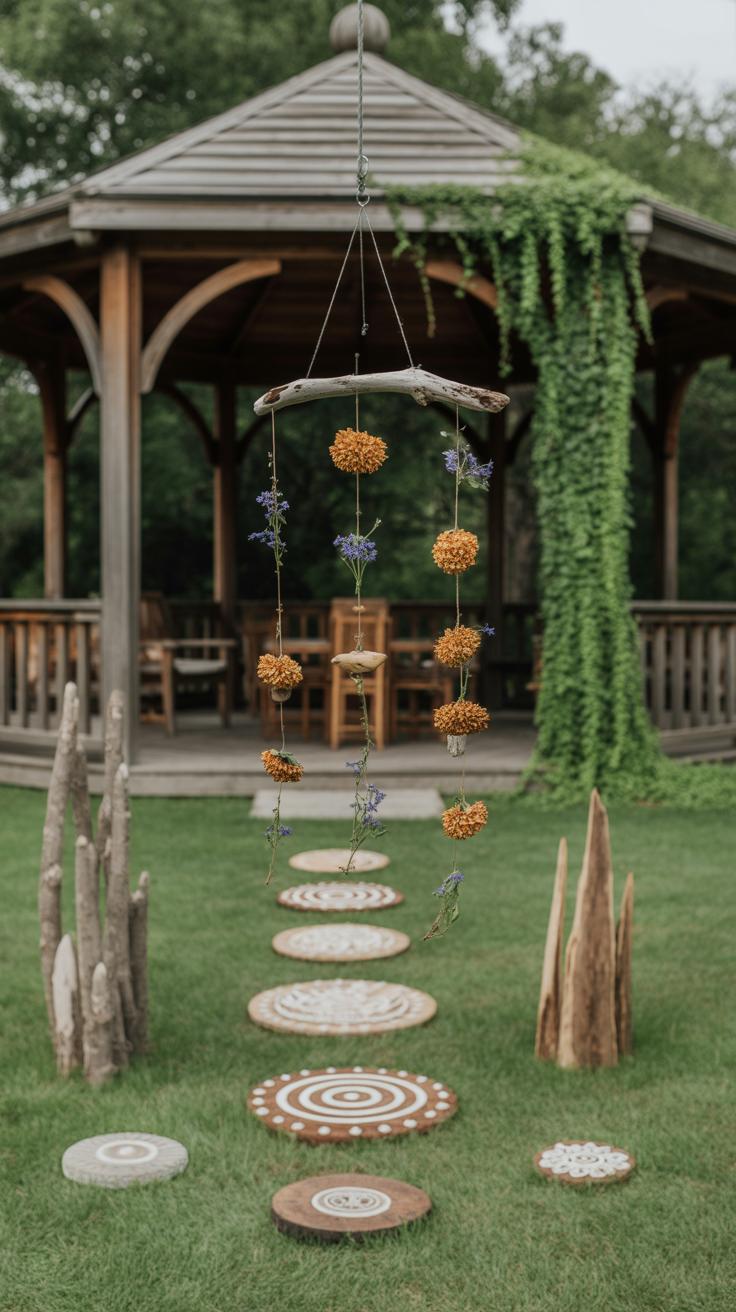
Using natural materials to create garden art is a simple way to bring whimsy and personality to your outdoor space. Stones, twigs, leaves, and even recycled bits can turn ordinary spots into something quite special. You might arrange colorful stones into patterns or stack flat rocks to form quirky little towers. Twigs can become miniature fences, dreamcatchers, or abstract sculptures if you’re feeling a bit artsy.
Leaves offer more delicate possibilities, like pressing them into homemade paper or weaving them into small wreaths. If you have some old jars or broken ceramics around, these can be painted or glued together to craft unique planters or garden markers. The key is to start collecting and thinking about what nature offers you, rather than heading straight to a store.
Easy Art Projects with Nature
Painting rocks is probably one of the easiest projects you can dive into. Grab some acrylic paints and experiment with dots, stripes, or tiny creatures—perhaps a ladybug or a butterfly. These can be hidden here and there in your garden to surprise visitors. Twig sculptures take a bit more patience but are equally rewarding. Try bundling twigs into star shapes or simple mobiles that sway gently in the breeze. It can be a relaxing, almost meditative activity once you get started.
Sometimes, it’s about the process rather than the perfect outcome. You might find yourself spontaneously creating something you didn’t imagine. That’s part of the magic, really.
Displaying Your Art Creatively
Where you place your garden art matters as much as making it. Instead of just scattering painted rocks randomly, think about placing them along pathways or near flowerbeds where they catch the eye but don’t clutter the space. Twig sculptures can be hung from tree branches or leaned against pots to add dimension. Small collections grouped together often draw more attention than single pieces alone.
You might also consider unexpected spots—like perched on fence posts or tucked under shrubs. These placements invite discovery and keep the garden feeling alive and playful, fitting well with the whimsical theme. Could a tiny rock fairy house or a twig wind chime in unusual corners be exactly what your garden needs to charm its visitors?
Encouraging Wildlife Visits
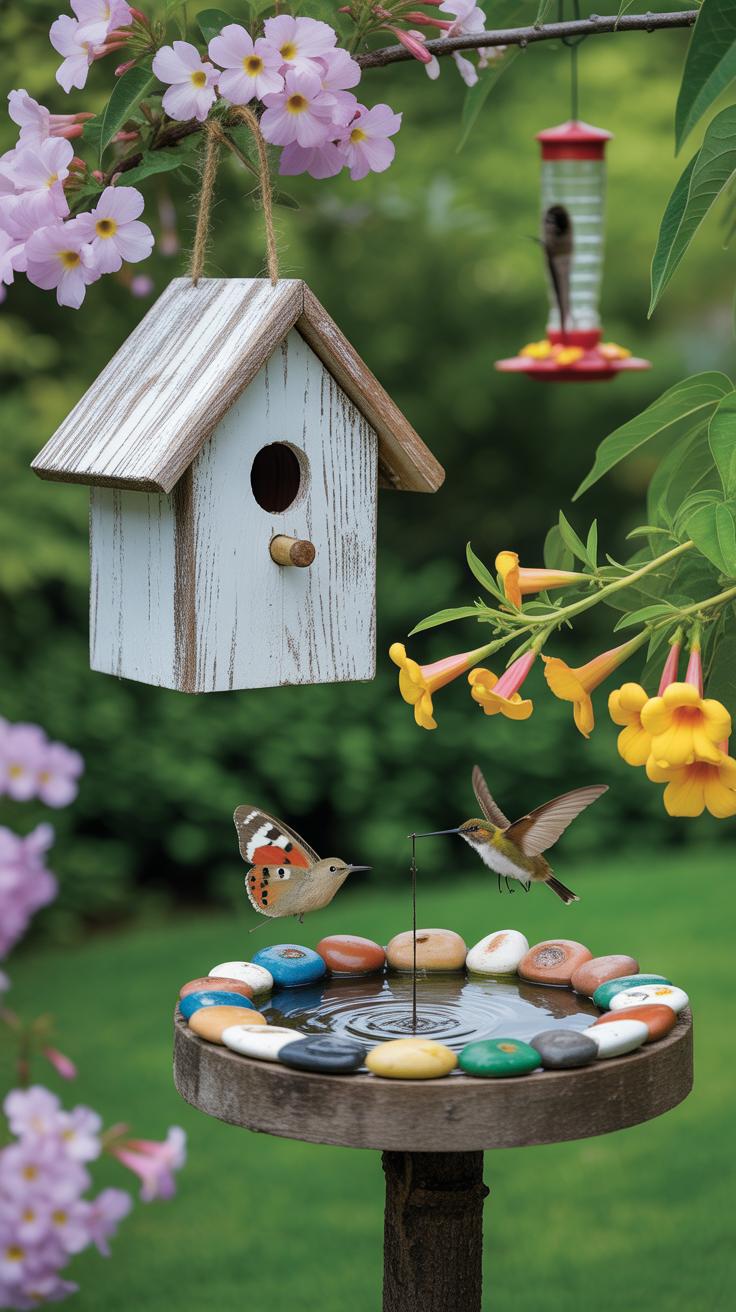
Making your garden a friendly place for birds, insects, and small animals changes everything. It feels alive, somehow richer. You might think it’s tricky, but it really isn’t. Just a few thoughtful touches can welcome these visitors and add to your garden’s charm.
Installing Bird Feeders and Houses
Bird feeders bring in a gentle hustle and bustle. Choose simple feeders—tube-style or platform types work well. Hang them where you can watch but keep some distance so birds feel safe. Adding birdhouses invites nesting, giving your garden little residents for months at a time. Each feeder or house can turn a quiet corner into a spot full of whispered wings and soft chirps. I remember setting up a small wooden birdhouse. It took weeks, but when bluebirds finally moved in, it felt like a secret shared.
Planting for Pollinators and Beneficial Insects
Plants aren’t just pretty—they’re invitations. To butterflies, bees, and good bugs, flowers are a beacon. Think about planting:
- Lavender, for its scent and nectar
- Milkweed, which draws monarch butterflies
- Marigolds, friendly to many helpful insects
- Echinacea, perfect for bees
- Herbs like thyme and oregano that welcome tiny pollinators
It’s tempting to go for uniform flower beds, but mixing these plants randomly feels more natural—and better for wildlife. Watching a bee pause on a flower, or spotting a ladybug resting on a leaf, somehow makes the garden’s magic feel… real. You might even wonder if the butterflies choose their routes just to tease you a little.
Seasonal Changes to Keep the Magic All Year
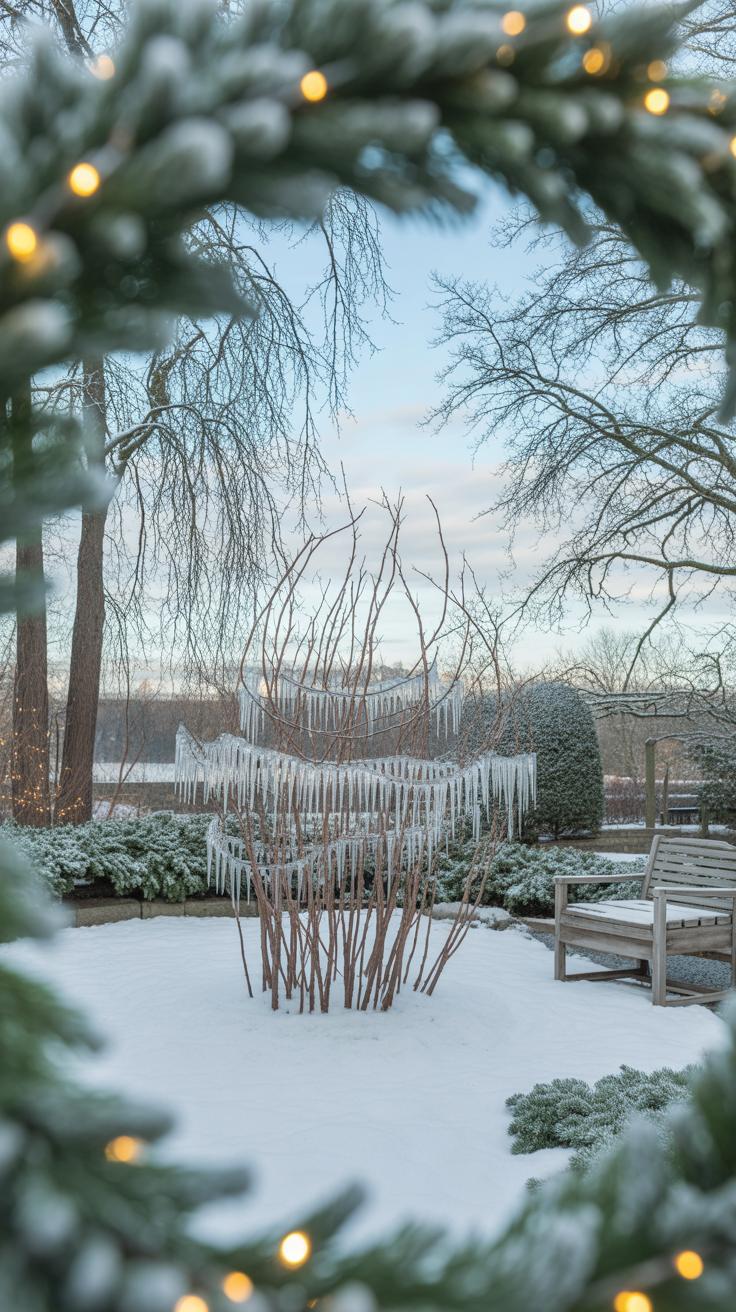
Choosing Plants That Change with Seasons
When planning your magical garden, think beyond just spring flowers. Pick plants that offer something interesting in every season. Maybe a shrub with bright berries that last through winter, like holly or winterberry. Or trees whose leaves shift rich shades of red and gold come autumn. That shift in color can feel like the garden itself is alive, reminding you the magic never truly fades.
Flowers like crocus and snowdrops peek up early in the year, while late bloomers like sedum or asters add color well into fall. Don’t overlook evergreens—they provide structure and a steady background when other plants pause.
Sometimes it’s good to mix predictable patterns with surprises. For instance, some plants bloom sporadically or have unusual foliage, keeping your eye curious. I once planted witch hazel, which flowers in winter, and found it added a strange, subtle charm when most things lay dormant.
Seasonal Decorations and Upkeep
Your magical garden isn’t complete without its seasonal touches. Think about swapping decor to mirror the environment outside your door. Light fabrics and airy pieces in summer can give way to cozy lanterns and rustic wooden elements in cooler months. Perhaps you’ve noticed how even the garden feels different when you hang a string of soft lights rather than bright, stiff fixtures.
Garden care shifts too. In spring, focus on planting and feeding; summer calls for watering and trimming. When fall arrives, clearing leaves and protecting tender plants takes priority.
Changing decorations isn’t just about aesthetics; it helps you reconnect with the garden’s rhythm. Maybe one day you’ll find yourself rearranging lanterns under a chilly twilight, noticing how those small changes keep your outdoor space feeling alive—and magical—no matter the season.
Maintaining Your Magical Garden
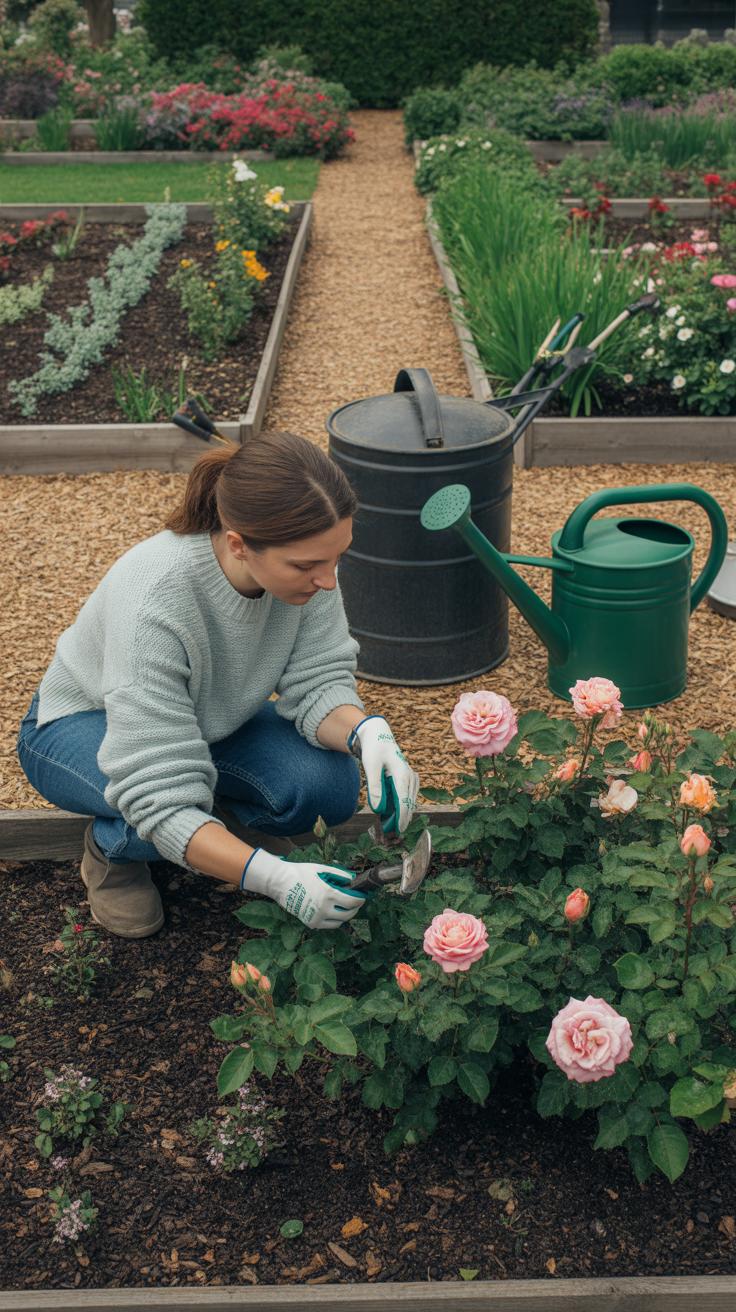
Watering and Feeding Plants
Keeping your plants happy doesn’t have to be complicated. Most garden plants prefer consistent moisture, but not soggy soil. I find it easier to water early in the morning or late afternoon—less evaporation, and plants soak it up better. Some days you might feel like watering more, especially during dry spells, but try to check the soil first. Sticking your finger an inch into the dirt can tell you if it’s time.
Feeding your plants might seem like an extra chore. But a simple routine with a balanced, slow-release fertilizer every few weeks can do wonders. I often mix it into the top layer of soil to avoid disturbing roots. Alternatively, liquid fertilizers diluted in water give quick boosts, especially for flowering plants. Don’t overdo it—plants can react oddly to too much food.
Cleaning and Repairing Decor
Whimsical garden decor tends to collect dirt, dust, and sometimes unexpected debris. I like to give my fairy lights, wind chimes, and statues a gentle wipe down every now and then. A soft cloth or sponge with mild soap usually does the trick. Cleaning these items not only makes them look fresh but also helps prevent damage over time.
Repairing worn or broken decorations doesn’t require much skill. Sometimes, loose parts just need tightening or a dab of glue. Other times, a fresh coat of paint can revive faded pieces. I keep a small basket of basic tools nearby—tape, paintbrushes, and glue—just in case. It’s surprising how a little attention can bring the magic right back.
Conclusions
Creating a magical garden with whimsical decor involves mixing fun design ideas with personal touches. By carefully choosing the right plants and decorative items, you can build an outdoor space that feels unique and inviting. Remember to think about how you want to use the garden and what makes you happy.
With the ideas and tips shared here, you have a clear guide to start planning and building your dream garden. Your backyard can become a place of wonder and joy through simple steps and creativity. Now it’s your turn to bring the magic to life in your garden.


